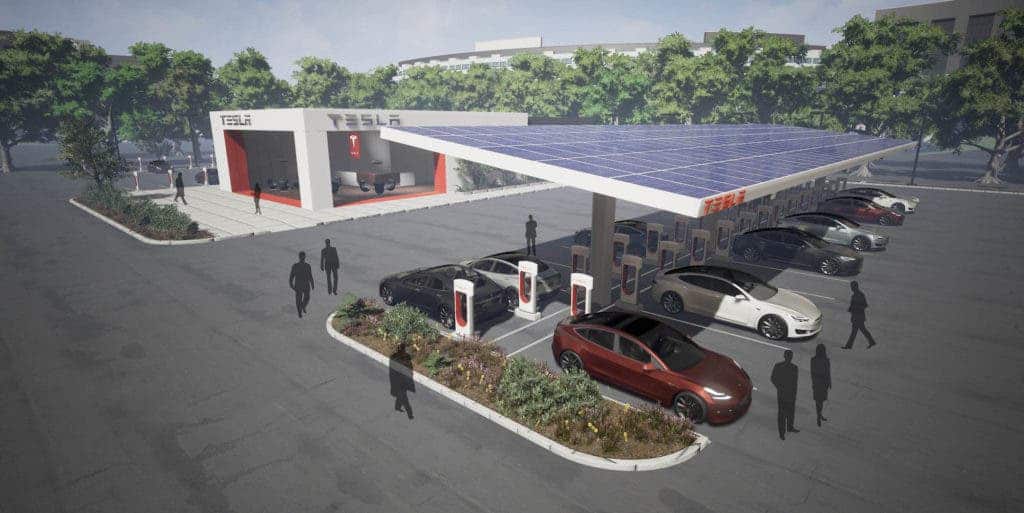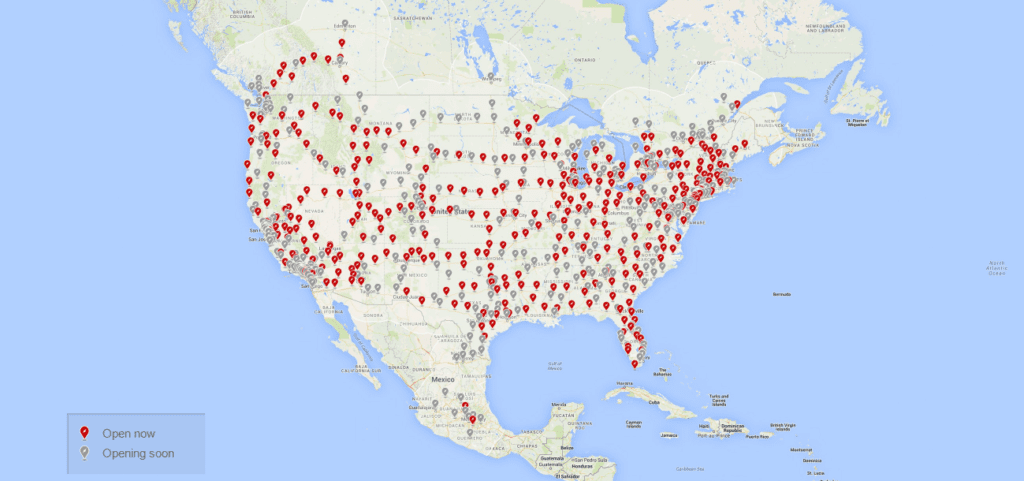As Tesla prepares to roll out the Model 3, a mid-priced electric sedan which signals the company’s transition from high-end electric cars to mass-market adoption, one big priority is upgrading the charging infrastructure. To cover massive upcoming demand, Tesla is planning on significantly expanding its charging stations, including the high-speeding docking stations known as the SuperCharger. The number of SuperChargers around the world is set to double by the end of the year, according to a recent press release.

Tesla started 2017 with 5,000 Superchargers around the world and 9,000 Destination chargers, the latter being various charging stations at hotels, resorts, and restaurants installed by Tesla itself. By the end of the year, the number of Superchargers should rise to 10,000, a thousand of which will be installed in California alone. Another 6,000 Destination chargers will also be added globally.
Despite the big upgrade which will see 150% more Superchargers in North America, it’s unclear whether Tesla can satisfy most of its 200,000 clients, especially as the Model 3 is set for release this year. There are over 400,000 Model 3 pre-orders that need to be delivered by 2019. According to Ben Sullins of Teslanomics, right now there are 105 Teslas for every Supercharger station in California.

A Supercharger outputs 120kW of power compared to only 35 to 50kW, the typical rating of DC Quick Chargers (CHAdeMO and SAE-CCS). A Tesla should be able to get charge 80% of the battery in 40 minutes and a full charge in 75 minutes. Because they’re not nearly as numerous as gas stations, the policy right now is to place them less than an 80% charge away from any adjacent station. If you check out the Supercharge map on Tesla’s website, you’ll see some places are more crowded than others. On the busiest routes, Tesla will make it possible for dozens of Superchargers to service vehicles simultaneously. Most Supercharger hotspots, even in California, are capped at 20 stalls. Moving to 50 or 100 individuals chargers sounds like a very big move.
“In addition, many sites will be built further off the highway to allow local Tesla drivers to charge quickly when needed, with the goal of making charging ubiquitous in urban centers,” Tesla announced.
All customers who bought a Tesla after Jan. 15 2017 can use a Supercharger for free up for up to about 1,000 miles worth of electricity every year. For most owners, that’s almost free charging all year-round on the road since the bulk of charging is done at home.
Was this helpful?



